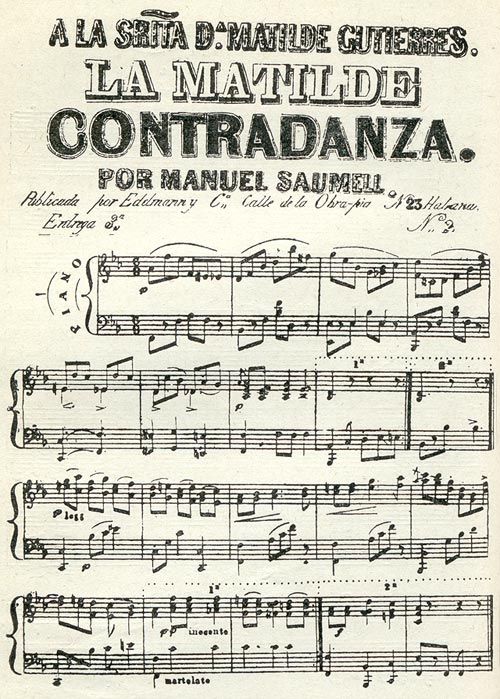7. Cuban music in the 19th century (1800-1868).

At the beginning of the 19th century, Cuba saw the popularization of authentic musical culture, influenced by maestros from Europe and others native to Cuba, as well as by the growing number of artistic troupes from various European countries. Religious music, which until then had been confined to the confines of churches, or secular music, which had not risen to the level of popular song and dance, resonated triumphantly in academies, salons, and theaters. It allowed Cuban society to delight in the classical and romantic productions that sprouted and flourished in Europe during the first half of the 19th century.
The integration of Cuban musical culture during this period is the result of the synthesis of numerous cultural elements contributed by thousands of immigrants who participated in the settlement of Cuba during the colonial period. This process established a dynamic of interinfluences between folkloric and popular music and professional music, with musicians playing a leading role in transferring elements from one sphere to the other. In this way, they contributed to the integration of Cuban music throughout the 19th century: its formation and synthesis.
The 19th century saw a proliferation of popular folk music and professional concert music. Dance halls played a pivotal role in this process, as they were the main venues for interaction between the two musical spheres. These spaces boasted a very unique sociocultural environment that shaped much of the historical development of Cuban music.
Instrumental music has been present in Cuba since the very beginning of Cuban nationality. Not only in European works performed in the country by Cuban musicians, but also in pieces that already displayed elements that identified it as a truly Cuban music. The best examples of this are the well-known Contradanzas and Danzas criollas, instrumental pieces that were present throughout the entire 19th-century Cuban music that was composed and performed, and the work of Manuel Saumell, which provides an indisputable testament to this.
In the process of the integral formation of Cuban culture, music plays a prominent role. In the 19th century, it was still in a period of clear development and identification, and the first glimmerings of nationality were already visible in figures, works, and genres that would later become symbols.








